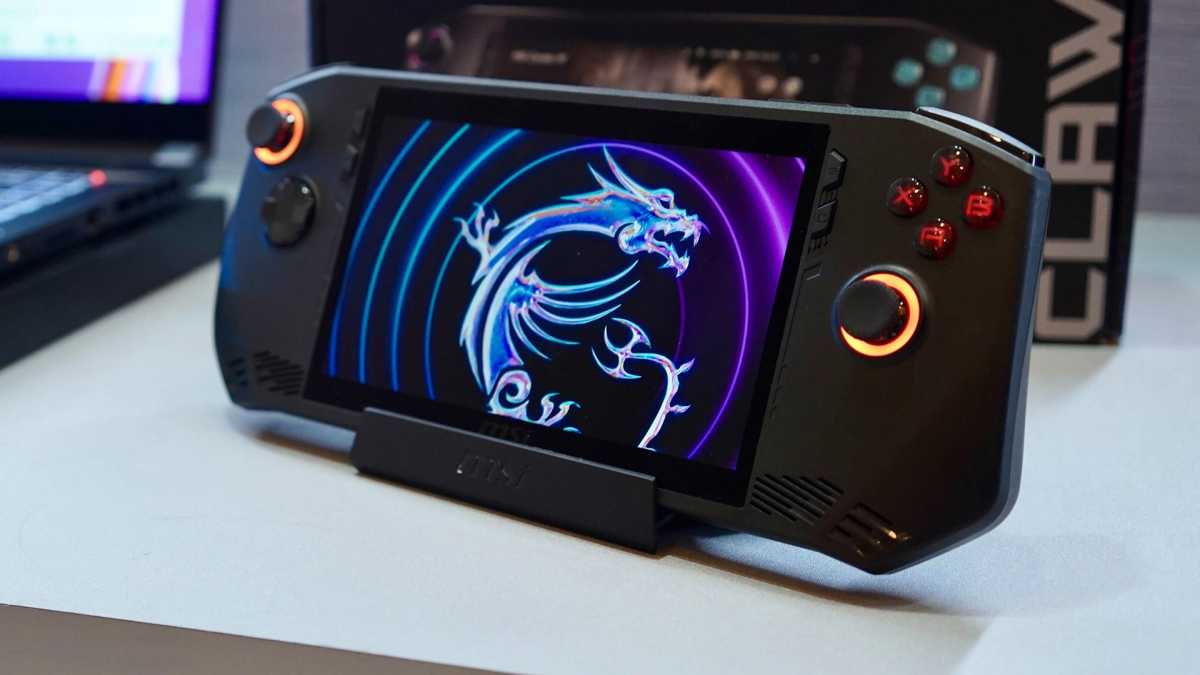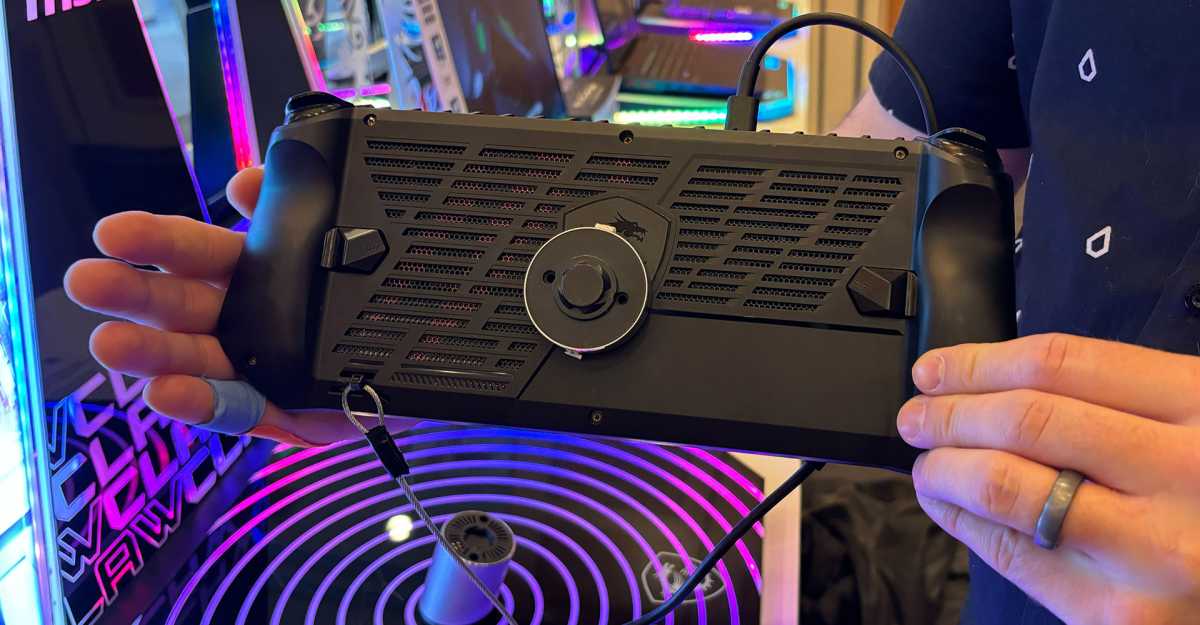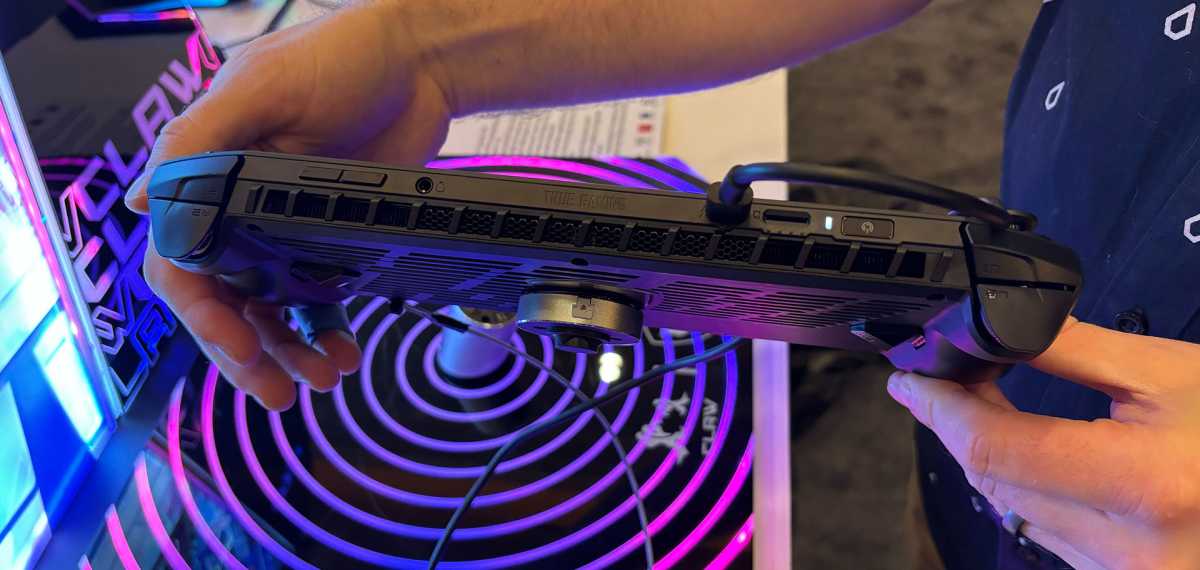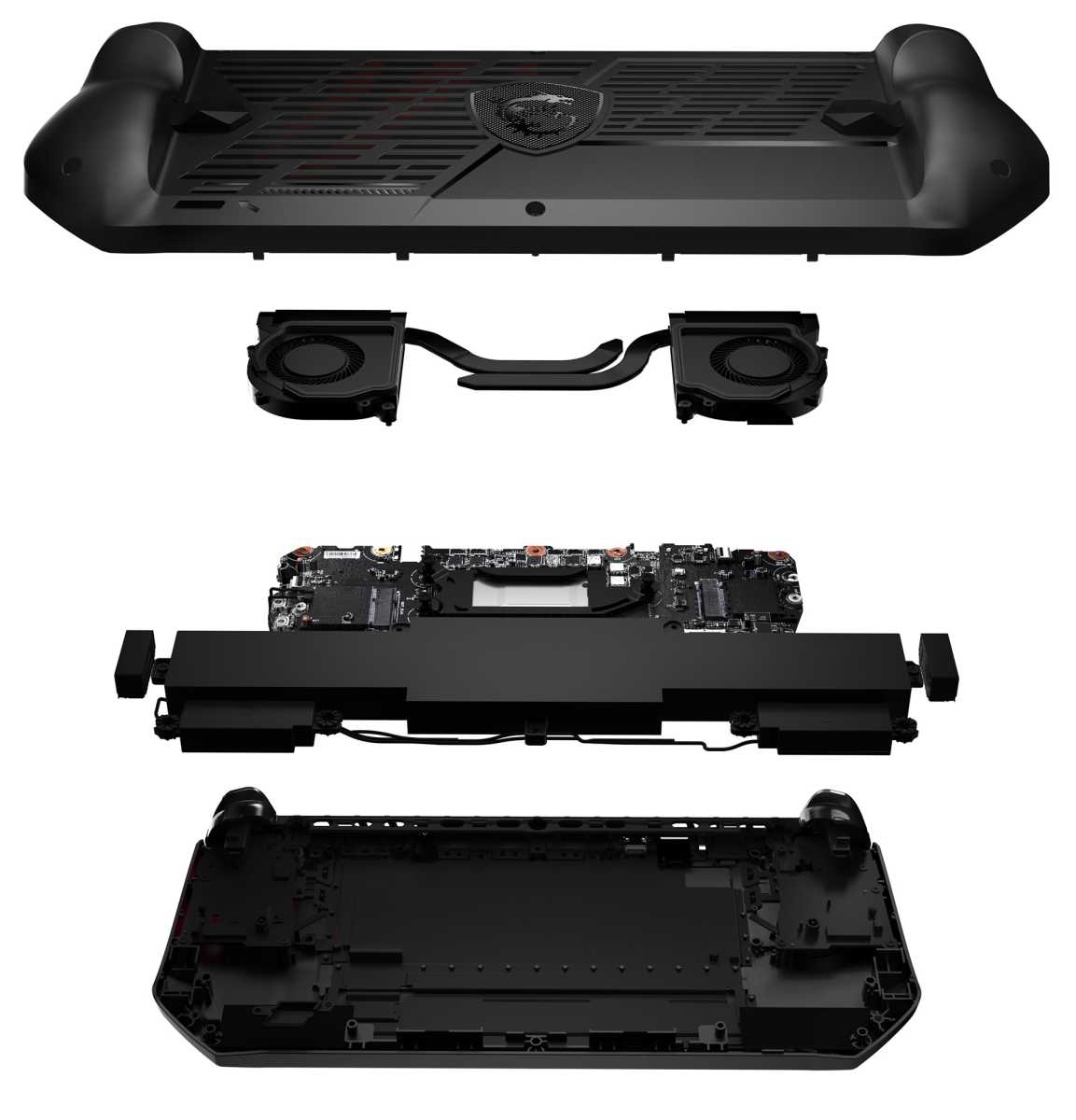MSI's Steam Deck competitor has a secret weapon: Intel

 Image: Brad Chacos/Foundry
Image: Brad Chacos/FoundrySince Valve launched the Steam Deck in early 2022, we’ve seen a flurry of handheld gaming PC designs. Everyone from small indies dependent on crowdfunding to industry giants like Asus and Lenovo have waded in. But they’ve all had one thing in common: reliance upon AMD’s super-efficient Ryzen APU designs. Here at CES 2024, MSI has decided to buck the trend with its Claw A1M portable game machine, which is packing the latest Intel Core Ultra processor and its integrated Arc graphics system.

Brad Chacos/Foundry
Brad Chacos/Foundry
Brad Chacos/Foundry
The Claw looks extremely familiar to anyone who’s been following this segment. It uses a 7-inch HD panel, an IPS LCD with a 120Hz refresh rate. The control layout is Xbox standard, eschewing the Steam Deck’s touchpads, with a pair of extra triggers mounted next to the grips on the rear. Like the Asus ROG Ally, it has RGB lighting around the thumbsticks, but the ABXY face buttons also light up. Speakers are front-facing, conveniently avoiding the places where your hands rest. Like most of the competition besides the Steam Deck, the Claw is running Windows 11.

Brad Chacos/Foundry
Brad Chacos/Foundry
Brad Chacos/Foundry
Underneath is the first Intel-based gaming portable from a major vendor, boasting a Core Ultra 5 in the base model and Ultra 7 in the upgrade. Memory is 16GB of DDR5, with “up to” 1TB of storage via the familiar PCIe Gen4 M.2 drive in the teeny-tiny 2230 format. You can expand that with a MicroSD card slot. Thunderbolt 4 in the USB-C port means impressive video output options. MSI is quick to point out that the Claw has the largest battery in its class at 53 watt-hours — the Steam Deck is considerably smaller at 40Wh, while the much larger Legion Go uses 49.2Wh.

Brad Chacos/Foundry
Brad Chacos/Foundry
Brad Chacos/Foundry
The tuned software includes a launcher system that integrates custom controls and lighting — again, something we’ve seen in similar products. But MSI is also trying to expand beyond the limits of PC gaming. The Claw includes the BlueStacks Android emulator and built-in access to the Google Play Store. In theory that opens it up to tens of thousands of Android games. But BlueStacks isn’t known as a speed demon even on desktops, so we’ll see how much this actually expands horizons at review time.

MSI
MSI
MSI
MSI is quick to highlight Intel XeSS as a major point in the Claw’s favor. Xe Super Sampling is Intel’s take on the same sort of technology in Nvidia’s DLSS and AMD’s FSR. And it’s impressive that it can be leveraged in a handheld…but it’s also impossible to deny that XeSS is far behind its contemporaries in terms of adoptions. As of June of 2023, the system had been implemented in just 50 PC games, and Intel hasn’t seen fit to update that achievement with a longer list in over half a year.
The MSI Claw A1M will be available in February, starting at $699.
Author: Michael Crider, Staff Writer

Michael is a former graphic designer who’s been building and tweaking desktop computers for longer than he cares to admit. His interests include folk music, football, science fiction, and salsa verde, in no particular order.
Recent stories by Michael Crider:
Nvidia makes GeForce Now easier to run on the Steam DeckMSI Claw claims up to 40% performance boost with new driver, BIOSAcer’s new Helios and Nitro gaming laptops pack all the latest chips





